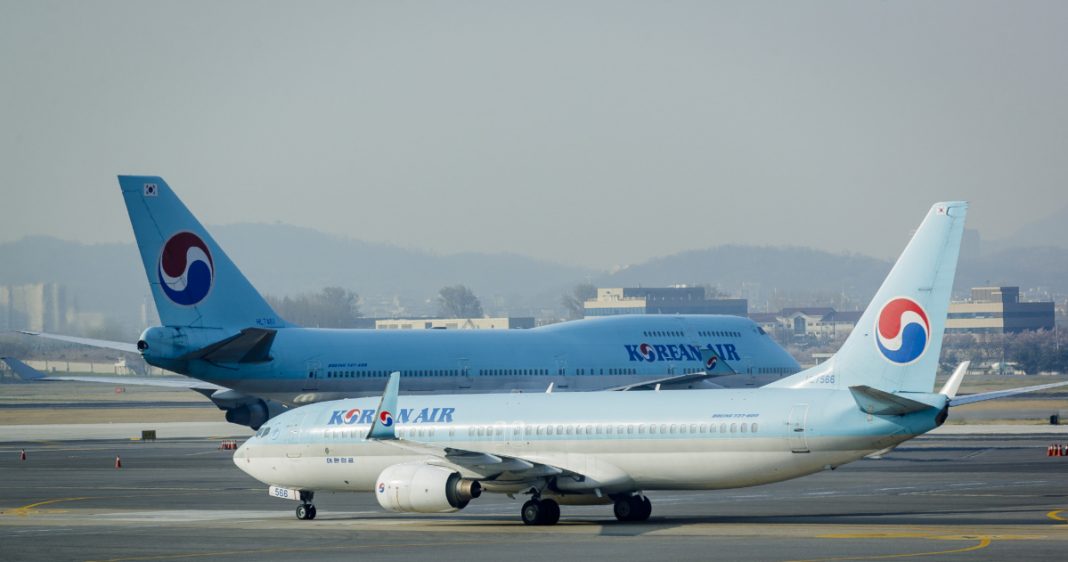Both the 737 and 747 can be seen as Boeing’s legacy aircraft. Both filled a much-needed niche, both blasted Boeing onto the world stage as a serious aerospace company, and both changed the face of air travel forever. But why is the production of the 747 ending now, while the 737 marches on into the 21st century (once its present problems are resolved)?

The short but beautiful life of the Queen
Spearheaded by Pan Am founder Juan Trippe, the giant quadjet was the elegant solution to airports becoming congested with smaller aircraft like the 707. Boeing had already been mulling a heavy-lift freighter, so took Trippe’s suggestion and built it into their own plans to form the 747.
Several years and around a billion dollars of investment later, the 747 was born. Its development involved some 50,000 people, and the building of the world’s biggest indoor enclosed space – its assembly line in Everett. Despite some teething troubles with underpowered engines, Boeing’s investment paid off, and by the 1980s, airlines all over the world were queuing up to get their hands on some Queens of their own.

Fifty years later, and we’ve seen multiple derivatives brought to market, each making improvements over the version before. From the 747-100 to the vastly popular -400 and through to the latest iteration, launched in 2005, the 747-8, Boeing has moved swiftly to keep the Queen up to date with the times.
Sadly, however, it has reached the end of the road. Just last month, Boeing announced that it would be ending the production of the 747 in 2023, drawing to a close more than five decades of history.

The unabated march forward of the narrowbody
At around the same time as work was progressing on the first 747, Boeing was also beavering away at another gamechanging plane. The 737 was to become the world’s first mass-produced narrowbody plane, designed to fill a niche below its smallest jet, the 727. It faced competition from the DC-9 and the BAC-111 but ultimately won out to become the bestselling plane in the world.
Launched with Lufthansa in 1967, the 737-100 found a home with several airlines. However, United Airlines wanted something a little larger, and so the stretched 737-200 was born. Seeking to increase the range and capacity of the narrowbody, Boeing announced the 737-300 in 1981. Over the next 10 years, this would be stretched into the -400 and -500, the trifecta eventually becoming known as the ‘Classic’ series.

Of course, since then, we’ve been through the immensely popular age of the 737-600, -700 and -800, aka the ‘Next Generation’ or NG series. Most recently, we’ve arrived at the MAX-7, -8, -9, and -10, making the 737 the aircraft type with the most derivatives ever.
While many are crying out for Boeing to undertake a clean sheet redesign of the 737, once the current issues are resolved, we’re likely to see the MAX being built for many years to come. So why did the 737 outlast the Queen of the skies?
Why did the 737 last so much longer?
The Queen’s reign, in terms of production, will last from 1968 to 2023, a total of 55 years. The 737, on the other hand, has been produced since 1966, and we can expect a good few years more of production too. By the time the line draws to a close, it could have been being built for 60 or even 70 years.

While avgeeks would almost always pick the 747 as the better plane of the two, the truth is that its design is fundamentally flawed in the modern world. The four engines of the 1970s just don’t fit in the economic and environmentally conscious operations of the 21st century, an issue we’ve seen with many other types, including the A340 and A380.
Yes, Boeing could redesign the 747 with modern engine technology and just two powerplants, but that would be incredibly expensive and time-consuming. The current engines had to be mounted quite far forward to fit under the wing; any bigger, and they would likely mean the entire wing construction would have to be redesigned.

When we look at the future, the widebody market is filled with Dreamliners and A350s, A330neos and the 777X. Modern planes designed for a modern world, using composite materials for lightness, cabin enhancements for passenger comfort, and the latest engine technology for fuel economy. The 747 just doesn’t fit.
The 737, on the other hand, is small enough and versatile enough that Boeing could bring it up to current standards with just a few tweaks. Well, we say ‘just a few’; one of those tweaks was the mounting of large modern engines on the 60-year-old fuselage, meaning they had to be brought forward, which offset the center of balance which meant MCAS had to be installed and… well, you know the rest of the story.

However, despite the current challenges, the 737 has been ‘derived’ to be a plane that is fit for the future, despite its age. The 747 just couldn’t be tweaked any further. While the 737 has beaten the Queen in terms of longevity, that’s not to say it hasn’t reached the end of the line itself. Most agree that the 737 cannot be modernized any further, so once the MAX has outstayed its welcome, Boeing is likely to call time on that production line too.
[ad_2]
Source link


